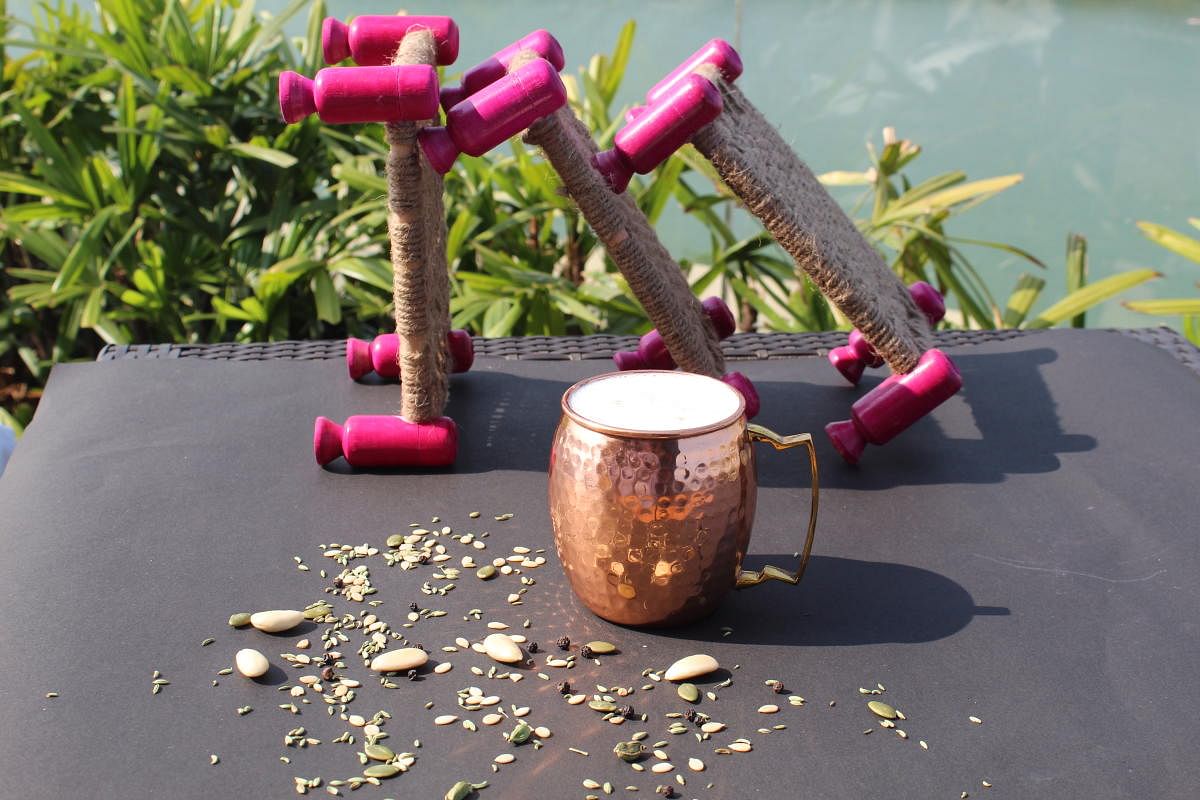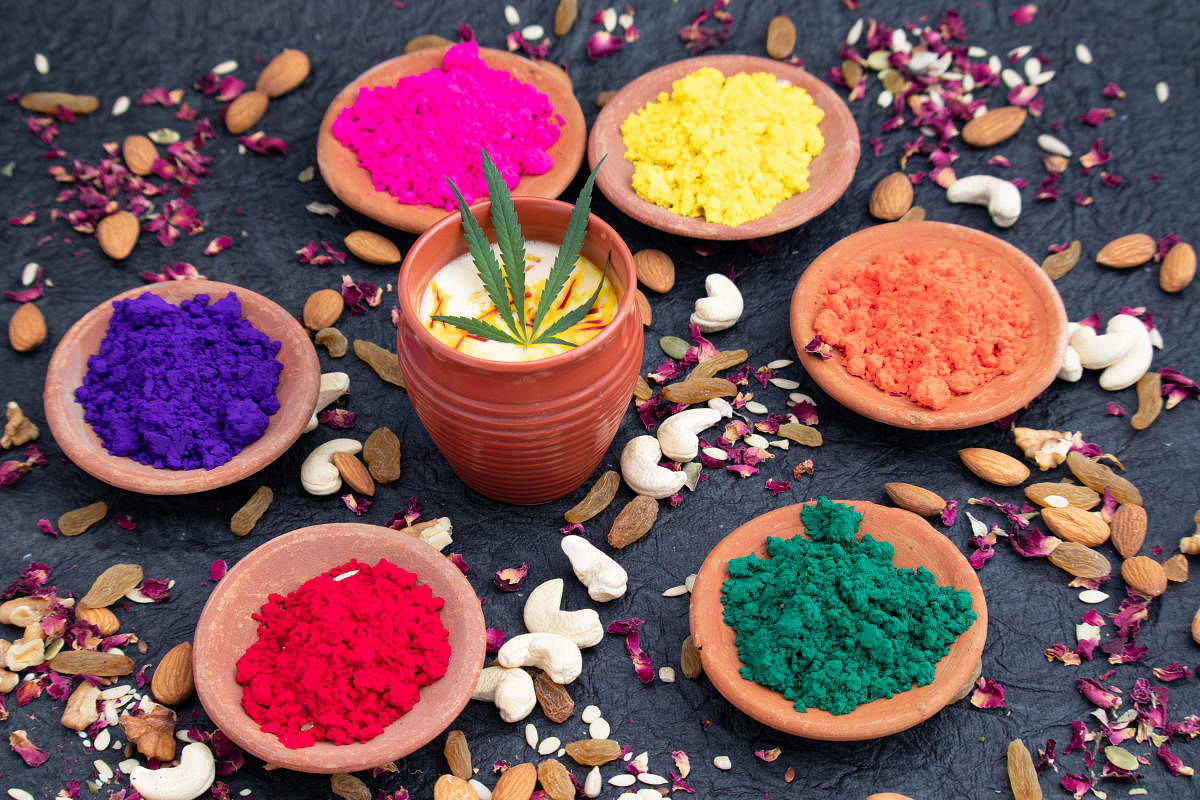

There is something miraculously balmy about a glass of thandai — the archetypal drink of Holi. Aside from being the feast of deliciousness thanks to all the dry fruits, spices and even rose petals used in its preparation, it has this mysterious ability to instantly put you in an upbeat mood with the very first swig. In fact, such is the effect of thandai one easily believes that it was the very same milk-based concoction that Goddess Parvati had given Lord Shiva to ease the pain after he drank all the poison from Samudra Manthan. And yet, when it is about the ancestry of the drink, thandai or kachi lassi as it is called in Punjab, has a much modern past. In fact, thandai, the gourmet coolant we know and love today, began its journey as Sardai — a milk, nut and occasionally bhang-based tipple that was (and still is) loved by the Nihang community.
The story has it that Nihang, who were an elite squad of warriors skilled in guerrilla warfare, took to having a milk-water and nuts-based beverage before setting out for any mission and would often add bhang for that extra push of energy. In fact, many of them would practice complete abstinence after having a glass of Sardai, which even in its earlier iteration was fortified with a handful of nuts, especially almonds, pumpkin seeds, pepper and rose to keep the body cool and the mind focused for long hours. Legend has it that the Battle of Saragarhi, where 21 heroic Sikh soldiers faced 10,000 Afghans, was sustained on a small pint of sardai and water. Such was the value of Sardai among the soldiers that
Maharaja Ranjit Singh, under whom the Nihangs had given up meat, drinking and smoking, were often allowed to have bhang-infused Sardai, especially when they had a fierce battle ahead.
Interestingly, Sardai, that many believe inspired the creation of the luxurious thandai, was one of the first “milkshakes,” says seasoned Chef Pradeep Tejwani, “that was based on the curative principles of Charak Samhita that used milk in various formats to cure conditions from insomnia to those arising from the elevation of Kapha Dosha.”
In fact, ground dry fruits, especially almonds and pumpkin seeds, adds Chef Tejwani, “added to a lassi — which was part milk and part water — as a common favourite across erstwhile Sindh and was an antidote to chilly winters and scorching heat.” Chef Tejwani who grew up savouring a good array of such milk-water based beverages recalls how a combination of dry fruits, spices, seeds and rose petals were soaked and then “ground into this coarse paste in a dourai, a deep bottom stone vessel, before it was sweetened with jaggery and then added to the lassi and offered in tall glasses. It was our childhood’s milkshake and would take long hours to prepare.”
Concurs culinary evangelist Chef Sharad Dewan, whose childhood memory, especially around the month of Holi is filled with memories of the week-long preparation where the best dry fruits, nuts, seeds and spices would be brought from the market, rinsed, sun-dried and then soaked for the preparation of the mix, which usually was done by the eldest member of the house — “in my case, it was my grandmother who would sit and create these large bowls of bejewelled collections that would be soaked overnight and then ground into a paste the next morning. This would be added to a simple sweet syrup and then stored in ceramic jars that were covered with a wet cloth.”
Of course, adds Chef Dewan, “all of it would be over during the two-day colour play when we would run home parched, have a swig of the cool drink and then were back on the ground energised and with more colours.”
Interestingly, for both Chef Tejwani and Chef Dewan, “the thandai of their childhood, which each insists on calling “the original milkshake” was laborious but not this luxurious. “Each element that was put into thandai, which was a popular summer drink as well, had its place and purpose. Even the sweetness of the syrup was barely to give the natural sweetness of the milk, almonds and seeds a boost.”
Cows around the time of Holi were fed with jaggery in the belief that this would ensure the milk is inherently sweet. True or not, but the quality of milk around the time was better and had a sweetish tinge to it. The initial thandai mix that was served in the Patiala Court as well during winters had almonds, pumpkin seeds, khus khus (poppy seeds), rose petals, pepper, cardamom, fennel seeds and sunflower seeds — ingredients that, says nutritional therapist Shaveta Bhassin, “were known for their cooling and digestive properties, and were part of recommended dietary habits for seasonal changes in both Sharangadhara Samhita and Ayurveda for their ability to restore the circadian rhythm in the body.”
Interestingly, fortified milk beverages, where the milk and water are in equal ratio, says Shaveta, “have been an integral part of Charak Samhita’s many therapies. A few examples are the moon milk or the haldi doodh and the cardamom-infused milk that was a popular pre and post-surgery drink that would calm the senses and help restore the body’s balance. The traditional process of making thandai in fact, continues Shaveta, “combines many of those healing properties in one tall glass. While the milk, cardamom, khus khus and pepper are there to cool down the body, almonds provide enough fat for the brain (namely, Riboflavin and Thiamine) to function actively, the melon seeds along with the rest of the ingredients on the other hand jogs the digestive process, which due to the sudden rise in temperature become sluggish.”
In addition, the combination of fennel and poppy seeds ensure that there is little inflammation in the body. Given that the body courtesy the weather change is already in a slo-mo mode, such combination becomes an armour against any form of acid reflux or infection.
But the one thing that makes thandai, which, say culinary experts, “is in parts a graduation from sardai, a must-have during Holi is the addition of bhang.” An effective antidote since ancient times, this indigenous variety of cannabis is popular both for its psychedelic and healing properties. In ancient times, fortified milk with bhang were administered to soldiers going for battle or even patients recovering from surgery, as it could not only rev up the response (read: excitement) but also numb the brain towards pain and burst of anger that is a result of a down on energy brain.” And the aspect of bhang that enables these properties is Cannabidiol (CBD) or cannabinoids, says Shaveta, “that aids in not only calming and detoxifying the body but in doing so helps repair and prepare the system for summers. And with milk at its base, the effect of this is long-lasting that is beneficial for the body but in small doses.”